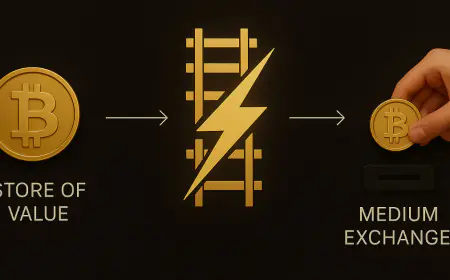Spot Ethereum ETF approval poses concentration risks: S&P
Just when you think the ups and downs of cryptocurrency couldn’t surprise you anymore, S&P Global issues a warning about the risks of allowing Spot Ethereum ETFs in the United States. They’re worried that this could lead to even more control over the network by a few key players, especially when it comes to the […]

Just when you think the ups and downs of cryptocurrency couldn’t surprise you anymore, S&P Global issues a warning about the risks of allowing Spot Ethereum ETFs in the United States. They’re worried that this could lead to even more control over the network by a few key players, especially when it comes to the Ethereum tokens that are staked.
A New Chapter for Ethereum
After the approval of ether futures ETFs in 2023 and the first-ever approval of spot bitcoin ETFs in early 2024, all eyes are now on Ethereum. The SEC is reviewing eight spot ether ETF applications, with a decision expected by May 23, 2024. Countries like Canada and Switzerland have already welcomed these ETFs, which now manage around $2 billion worldwide. But this big opportunity also comes with big responsibilities, especially because these ETFs can earn extra money by staking their Ethereum, which is not as straightforward as it seems.
Staking lets people lock up their cryptocurrency to help run the network, earning rewards in the process. It’s an attractive option for investors looking for more than what the ETFs already offer. But here’s the twist: unlike regular spot ether ETFs that just follow Ethereum’s price, some, like those proposed by Ark Invest and Franklin Templeton, want to get involved in staking. This means they’re not just holding Ethereum; they’re playing a part in making the network’s big decisions, which could significantly change Ethereum’s power dynamics.
Balancing Act: New Technologies and Centralization Concerns
The heart of S&P’s cautionary note is about how staking could change who has control over Ethereum. Imagine if U.S. spot ether ETFs got involved in staking to such an extent that they could influence who gets to be a validator on the network. With spot Bitcoin ETFs quickly gathering $12 billion shortly after their launch, the possibility of ether ETFs doing the same is very real. However, this brings up fears about too much control being in the hands of too few, which could threaten the network’s safety and fairness.
Ethereum uses a proof-of-stake system that needs a two-thirds majority to approve transactions. This system is at risk if too much control is held by a single group or if a bug affects many validators at once. This could stop Ethereum in its tracks, affecting many financial transactions and the broader blockchain world.
S&P Global is especially concerned about Lido, a big name in decentralized staking, nearing control of one-third of Ethereum’s staking power. This situation highlights how the involvement of U.S. institutions in staking could either help distribute power more evenly or make the current concentration worse, depending on how they choose their custodians. The spotlight is also on Coinbase, with its 15% control over Ethereum’s validators, pointing out the complicated relationships and potential risks in the ecosystem.
The development of new digital asset custodians and spreading staking across different firms might help reduce these risks. However, as things keep changing, staying alert and making smart choices will be crucial.
What's Your Reaction?





































































































